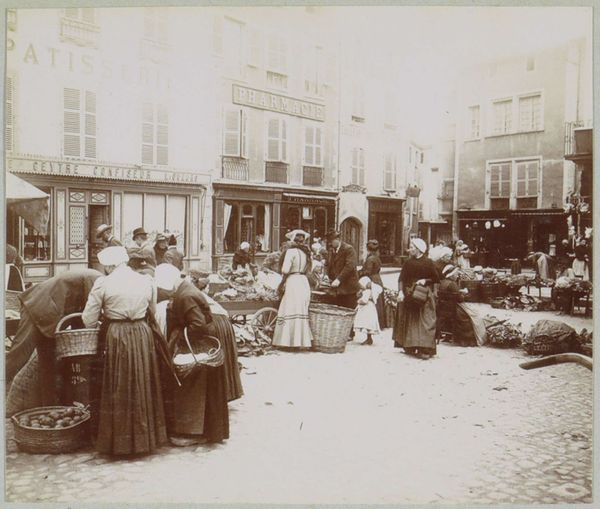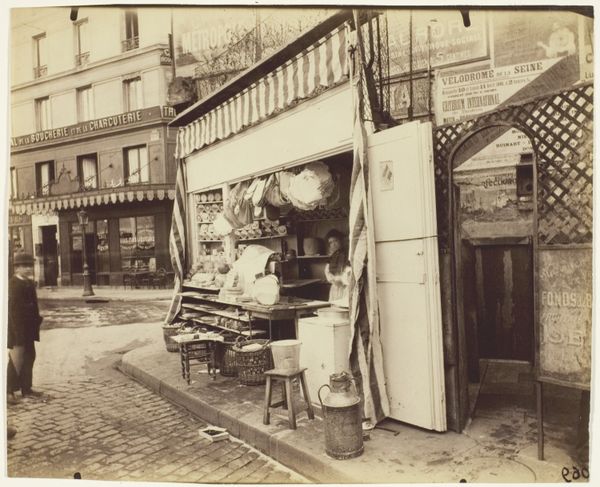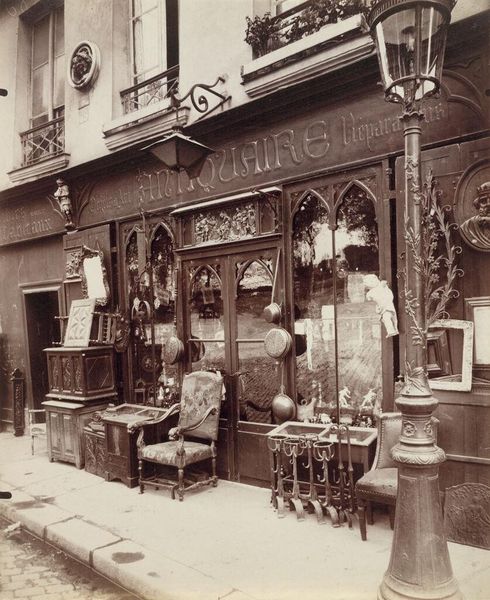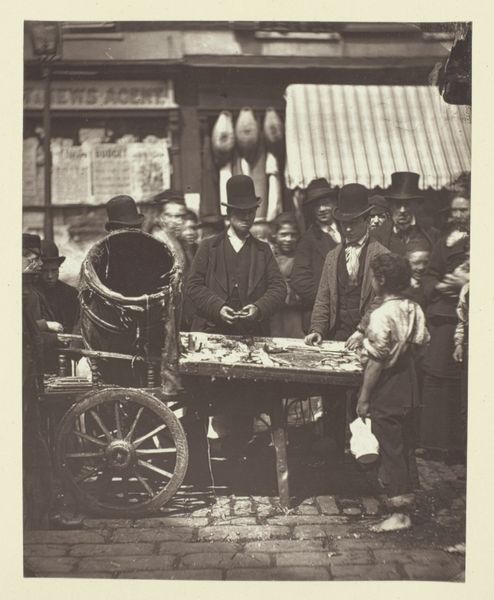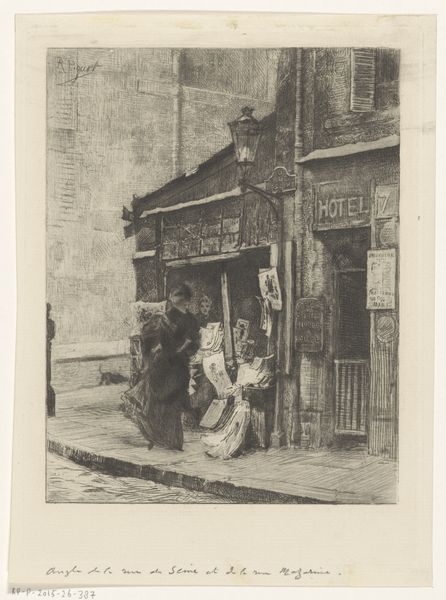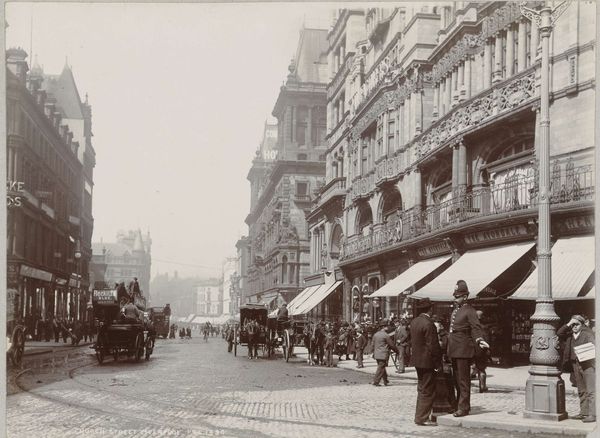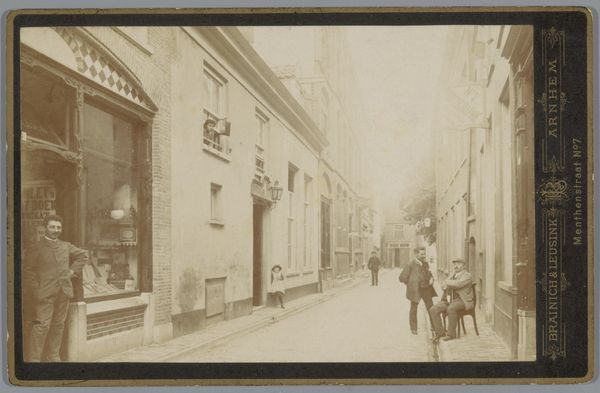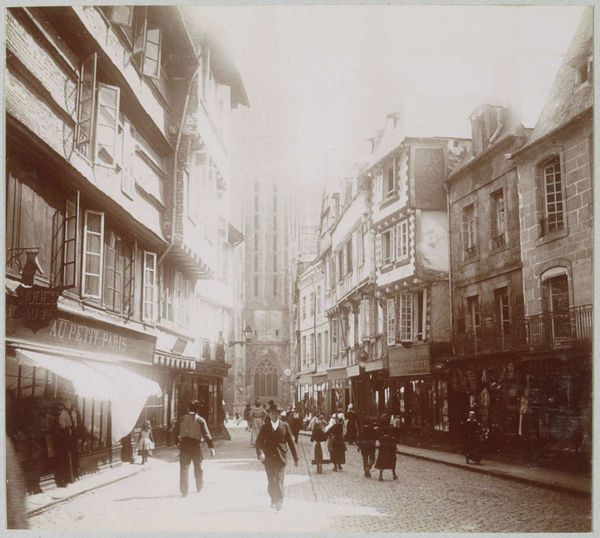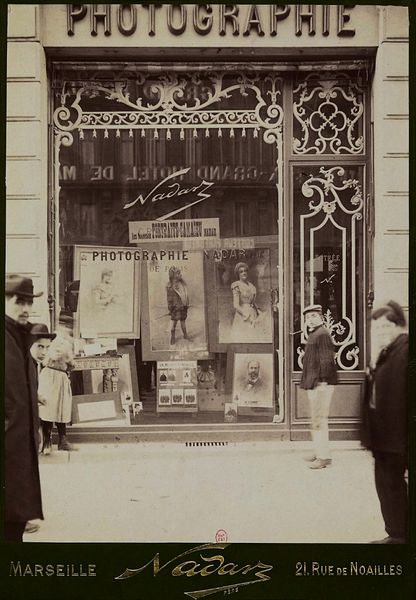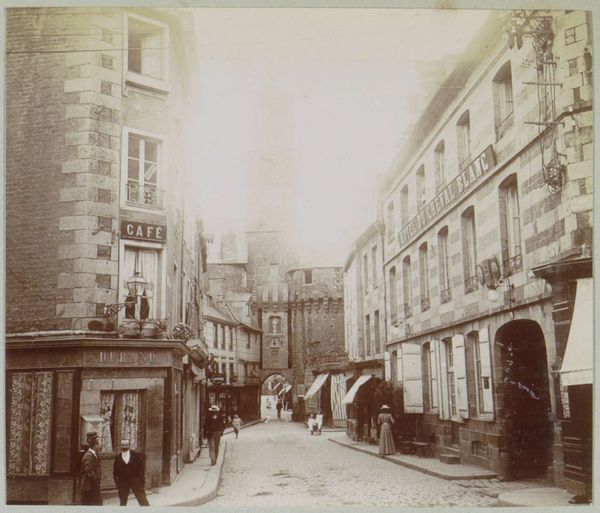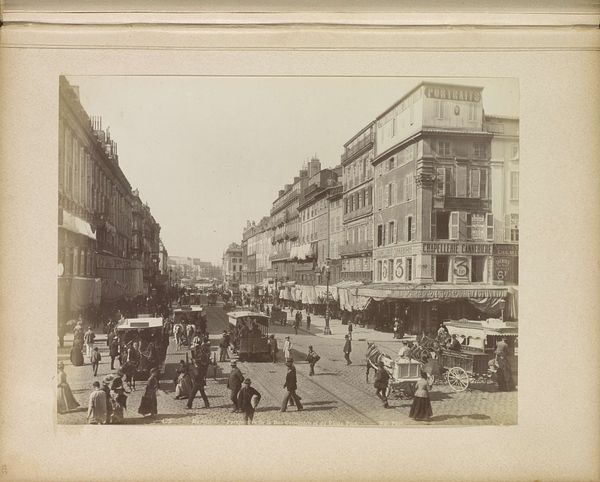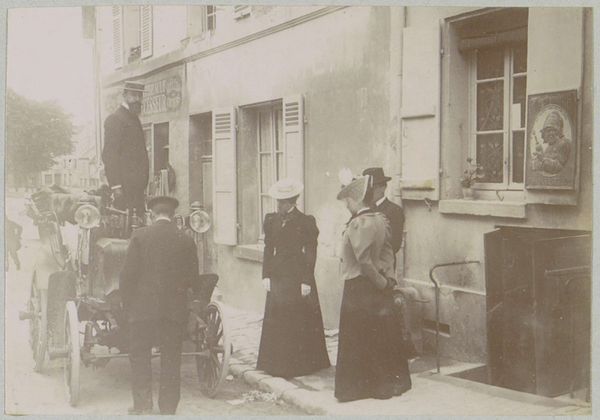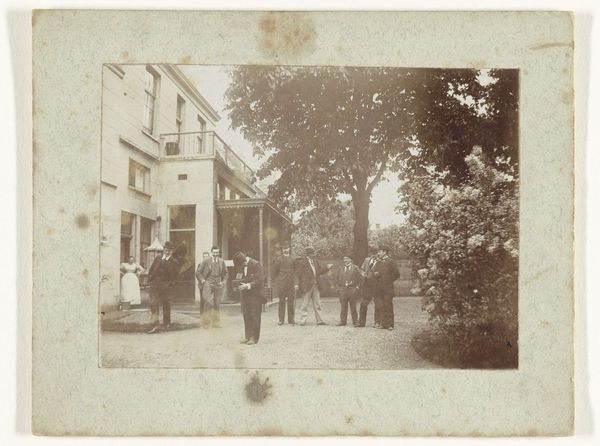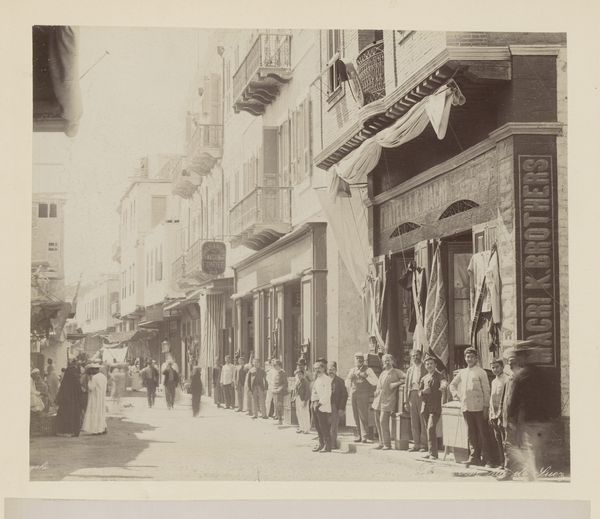
photography
#
photography
#
historical photography
#
cityscape
#
genre-painting
#
realism
Dimensions: height 69 mm, width 82 mm
Copyright: Rijks Museum: Open Domain
Editor: Here we have "Straatmarkt in Issoire," a 1902 photograph by Delizy, housed at the Rijksmuseum. It really captures a bustling market scene; it almost feels like I could step right back into that time. How do you interpret this work, particularly its social commentary? Curator: It’s more than just a depiction of daily life, isn't it? Let's consider the gaze of the photographer. How do you think Delizy’s position, likely a bourgeois perspective, influenced the portrayal of this marketplace? Are we seeing a romanticized view or a critical observation of class dynamics at play? Editor: I hadn’t really thought about it from the photographer's viewpoint. It does seem like a slice-of-life perspective. But, maybe there's something more here. What is the historical and societal role of the marketplace, and how might that impact what we see in this work? Curator: Absolutely. Marketplaces are sites of exchange, not just of goods but of ideas, cultures, and even power. Notice the arrangement of vendors, the commodities, and the customers themselves. Can you identify potential markers of gendered or classed spaces in this ostensibly public area? Do some individuals appear more burdened or advantaged? Editor: Well, now that you point it out, the men seem to be engaging in transactions while women manage the stalls; perhaps there's something to say about women and labor here? Also, I think children and the elderly are not really engaged in commerce but sitting on the margins. I wonder, is this photograph attempting to speak to broader socioeconomic themes? Curator: Precisely! Consider how photography at the turn of the century could both document and construct social realities. The clothing, the postures, the spatial arrangements - each detail serves as potential evidence to reveal the negotiations, and at times struggles, that are inherent to market activity. Editor: This photograph shows more than just everyday life. Now I understand how it can start conversations around gender roles, social power structures, and class divisions in 1900s France. I'll remember this perspective moving forward. Curator: Exactly. By contextualizing the photograph within broader historical and theoretical frameworks, we enrich our viewing experience. This work acts as an artifact which illuminates social complexity, allowing us to pose thoughtful questions about representation and lived experience.
Comments
No comments
Be the first to comment and join the conversation on the ultimate creative platform.
